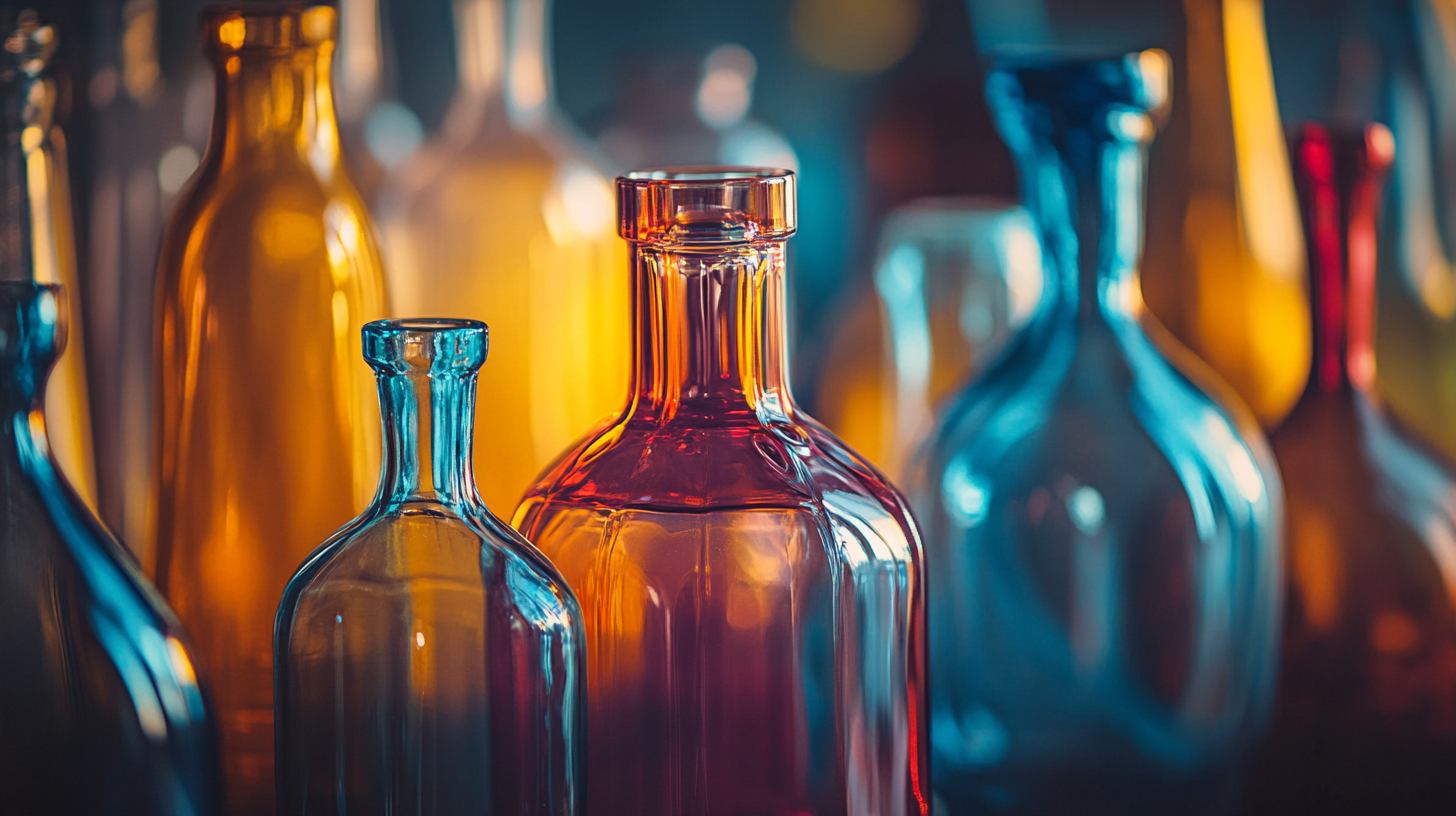Welcome to this website!

As we approach the transformative wave of technological advancements in 2025, the glass containers industry is poised to experience significant growth and innovation. The global market for glass containers is projected to reach USD 72 billion by 2025, driven by rising consumer demand for sustainable packaging solutions and the increasing shift towards eco-friendly materials. As international trade compliance and import-export certifications become increasingly stringent, buyers must navigate a complex landscape to ensure they meet regulatory requirements while also capitalizing on market opportunities. This blog will explore the best practices for selecting glass containers that not only align with aesthetic and functional needs but also satisfy the evolving standards of quality and safety as mandated by various certification bodies worldwide.

The shift towards sustainable living has become increasingly pivotal in today's world, and using glass containers plays a significant role in this transition. Unlike plastic, glass is 100% recyclable without loss of quality or purity, making it a preferred choice for eco-conscious consumers. According to a report by the Container Recycling Institute, the recycling rate for glass containers reached 33.4% in 2022, highlighting an upward trend in glass use that benefits both the environment and the economy.
When opting for glass over plastic, consumers not only reduce their carbon footprint but also enhance their food safety. Glass is non-reactive and does not leach harmful chemicals into food or beverages, which is particularly crucial for maintaining the integrity of organic products. A study by the Food Packaging Forum revealed that 70% of consumers are concerned about chemical contamination from food packaging, illustrating the growing demand for safer alternatives.
Tips: To fully embrace sustainable living with glass containers, consider investing in a variety of sizes for different uses—storage, meal prep, or on-the-go meals. Always choose containers made from recycled glass and check for certifications to ensure the highest safety standards. Lastly, engage in local recycling programs to facilitate proper disposal and contribute to the circular economy.
As we approach the 2025 technology revolution, modern glass containers are evolving rapidly to meet the demands of global buyers. One of the most innovative features to look for is advanced sealing technology. New airtight seals ensure that food stays fresher for longer, minimizing waste and enhancing the longevity of stored items. Additionally, features like vacuum insulation are becoming popular, allowing glass containers to maintain optimal temperatures for both hot and cold contents, catering to the needs of health-conscious consumers.
Another exciting development is the integration of smart technology. Smart glass containers are equipped with sensors that can track freshness and alert users via smartphone apps when items are nearing expiration. This not only helps in managing pantry inventory but also encourages a sustainable approach to food consumption. Furthermore, lightweight and shatterproof designs are increasingly favored, making these containers not just visually appealing but also practical for everyday use. With these innovative features, modern glass containers offer a perfect blend of functionality and style, making them a top choice for consumers worldwide.

As the food industry evolves, glass containers are emerging as a paramount choice for global buyers focused on food preservation and safety. Glass is not only non-reactive but also impermeable, meaning it doesn't leach harmful chemicals into food or absorb odors and stains. This characteristic ensures that food maintains its original flavor and nutritional value, making glass an ideal option for storing both fresh and prepared meals.
Moreover, glass containers are designed with food safety in mind. Many are now available with airtight seals that prevent contamination and spoilage, thereby extending the shelf life of products. This is particularly beneficial for consumers who prefer to buy in bulk and store food for longer periods. Transitioning to glass containers also promotes sustainability, as they are reusable and recyclable, contributing to a more eco-friendly lifestyle. As global buyers prioritize health and environmental consciousness, the rise of glass containers is set to lead the charge in safe food storage solutions.
| Container Type | Capacity (L) | Material Thickness (mm) | Temperature Resistance (°C) | Food Compatibility | Recyclable |
|---|---|---|---|---|---|
| Food Storage Jar | 1.5 | 3.0 | -40 to 120 | Dry Goods, Liquids | Yes |
| Baking Dish | 2.5 | 4.0 | -20 to 250 | Oven, Microwave | Yes |
| Glass Beverage Bottle | 0.75 | 2.5 | -30 to 100 | Juices, Water | Yes |
| Canning Jar | 1.0 | 3.0 | -30 to 121 | Fruits, Vegetables | Yes |
| Storage Container | 3.0 | 5.0 | -20 to 130 | Multiple Foods | Yes |
As we navigate the 2025 technology revolution, the debate between glass and plastic containers continues to shape the choices of global buyers. Glass containers, known for their durability and eco-friendliness, are gaining traction as consumers increasingly focus on sustainability. Unlike plastic, glass does not leach harmful chemicals and is entirely recyclable, making it a safer option for food storage. Its inert nature means that it won’t absorb odors or flavors, ensuring that food tastes as intended.

When considering the best glass containers for your needs, keep these tips in mind: First, look for airtight seals to preserve freshness and prevent spills. Secondly, consider containers that are oven and microwave safe for added versatility in the kitchen. Lastly, opt for designs that are stackable to save space in your cabinets, providing both functionality and organization. By choosing glass over plastic, you not only invest in your health but also contribute to a more sustainable future.
The future of glass container design and technology is poised for significant transformation as we approach the 2025 technology revolution. According to a recent market analysis by Smithers Pira, the global glass packaging market is projected to reach approximately $69.59 billion by 2025, driven by a rising consumer preference for eco-friendly and sustainable products. This shift towards sustainability is not only influencing material choice but also design aesthetics, with manufacturers increasingly adopting minimalist and functional designs that appeal to environmentally conscious consumers.
In addition to eco-friendliness, advancements in smart technology are anticipated to redefine glass container functionality. For instance, the introduction of RFID (Radio-Frequency Identification) technology into glass packaging will enable real-time tracking and inventory management. This innovative integration will enhance supply chain efficiency and reduce waste—a critical requirement in an industry that is facing increasing scrutiny over sustainability practices. As per a report by Mordor Intelligence, the smart glass market is expected to grow at a CAGR of 24.84% from 2020 to 2025, highlighting the burgeoning potential of combining traditional materials with cutting-edge technology. As we navigate this revolution, buyers must stay informed about these trends to make strategic decisions that align with future market demands.
